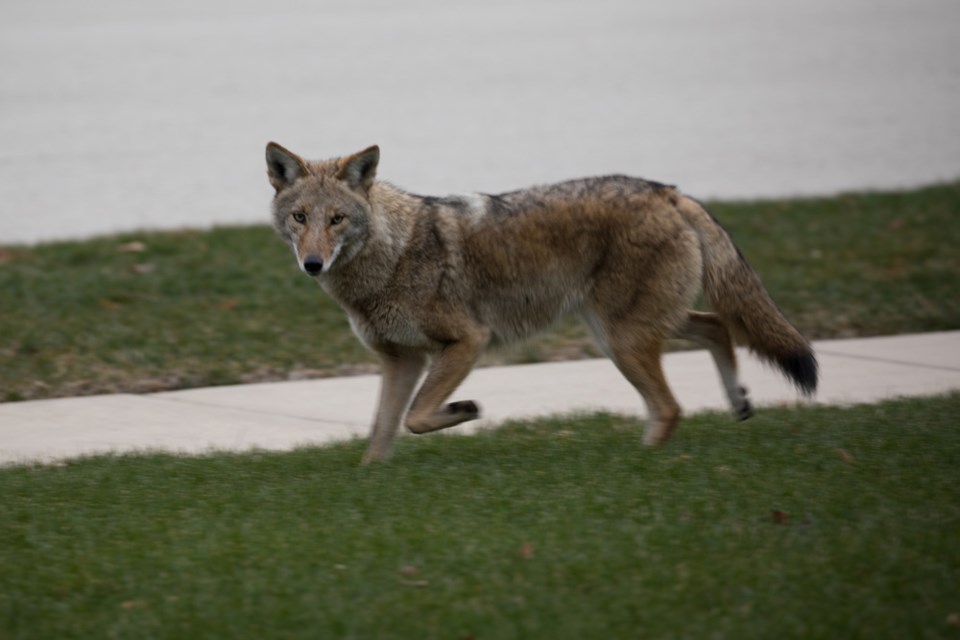It’s coyote courtship season again, and that means New Westminster residents should be on the lookout for increased coyote activity.
February is the season for courtship and mating, according to urban coyote information from the Stanley Park Ecology Society (SPES), so it will soon be time for females to dig their dens.
Female coyotes will dig a new den or find a pre-existing one; they’ll be located in well-hidden areas, such as behind dense vegetation or abandoned structures.
In New Westminster, coyotes are known to frequent Glenbrook Ravine and are often spotted in the neighbourhoods around the ravine, Victoria Hill and Queen’s Park.
Two recent sightings have also been recorded in Queensborough, according to the ecology’s society’s coyote sightings map.
You can also keep up with local coyote news in the New West coyote sightings group on Facebook.
They’re far from rare: the B.C. SPCA says there are an estimated 2,000 to 3,000 urban coyotes living in the Lower Mainland.
And, generally speaking, they’re not a threat to humans.
They’re naturally timid animals — and naturalists point out that it’s important for them to stay that way, for the safety of people and animals alike.
What to do if you see an urban coyote
So what should you do if you see a coyote?
The key to scaring away a coyote is to be big, brave and loud. The SPES recommends that you “haze” a coyote. How?
- Do not run — this could trigger a hunt or play instinct in the coyote. (Also, you can’t outrun it: Coyotes can sprint up to 65 km/h and trot comfortably at speeds of 20 to 30 km/h.)
- Raise your arms above your head and act aggressively.
- Yell “Go away, coyote!” — the sound will scare it and alert others that a coyote is near.
If yelling isn’t enough, you can:
- Rattle a coyote shaker made of a soda can and coins.
- Wave a stick to make yourself look bigger.
- Toss small objects like a coyote shaker near (but not directly at) the coyote.
- Spray it with water from a garden hose or squirt gun.
If the coyote doesn’t run away or acts aggressively:
- Retain eye contact and stay facing the coyote.
- Pick up small pets or young children.
- Slowly back away from the coyote.
- Call the Ministry of Environment RAPP line at 1-877-952-7277 and report your encounter to the Stanley Park Ecology Society.
How to protect pets and children from coyotes
The B.C. SPCA offers up this advice:
- Don’t feed coyotes.
- Supervise small children outdoors.
- Supervise pets outdoors — keep pets indoors from dusk to dawn.
- Keep your cat indoors — the only way to guarantee your cat’s safety is by making it an indoor pet or providing an enclosed area.
- Maintain your home — prevent rodents from attracting coyotes.
What’s next in the coyote life cycle?
You can expect pups to be born in April, with litters of four to seven pups per family — depending upon their food sources, the territory and the size of the pack.
Later in the spring, starting in May, pups will emerge from their dens and learn to survive with help from their parents. By July and August, pups will attempt to hunt on their own.
(information courtesy Stanley Park Ecology Society and BC SPCA)
📢 SOUND OFF: Have you had a coyote encounter in New West? Got a good coyote story or photo to share? Send us a letter.
Follow Julie MacLellan on Twitter @juliemaclellan.
Email Julie, [email protected]




